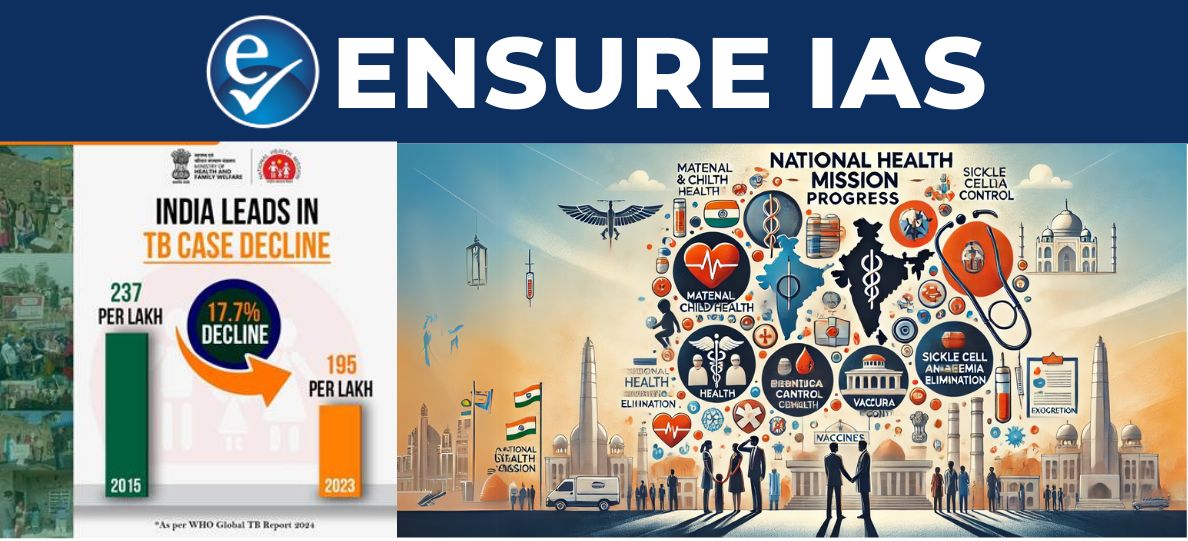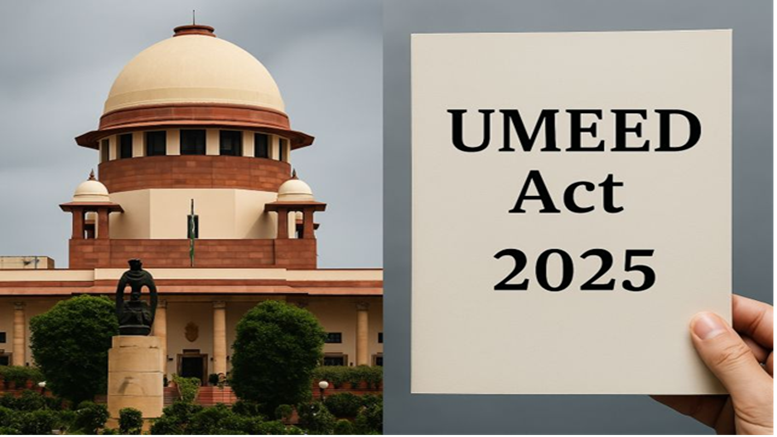- Courses
- GS Full Course 1 Year
- GS Full Course 2 Year
- GS Full Course 3 Year
- GS Full Course Till Selection
- Online Program
- GS Recorded Course
- NCERT (Recorded 500+ Hours)
- Polity Recorded Course
- Geography Recorded Course
- Economy Recorded Course
- AMAC Recorded Course
- Modern India, Post Independence & World History
- Environment Recoded Course
- Governance Recoded Course
- Science & Tech. Recoded Course
- International Relations and Internal Security Recorded Course
- Disaster Management Module Course
- Ethics Recoded Course
- Essay Recoded Course
- Current Affairs Recoded Course
- CSAT
- 5 LAYERED ARJUNA Mentorship
- Public Administration Optional
- ABOUT US
- OUR TOPPERS
- TEST SERIES
- FREE STUDY MATERIAL
- VIDEOS
- CONTACT US
Cabinet Reviews Achievements Under National Health Mission (2021-24)
Cabinet Reviews Achievements Under National Health Mission (2021-24)

- On January 22, 2025, the Union Cabinet, led by Prime Minister Narendra Modi, reviewed the progress of the National Health Mission (NHM) for the years 2021-2024.
- The Cabinet discussed key developments in areas like maternal and child health, disease control, healthcare infrastructure, human resource expansion, and digital health initiatives.
Key Achievements of NHM (2021-2024):
1. Improvement in Health Indicators
|
Key Term |
Definition |
2014-2016 |
2018-2020 |
Reduction |
|
Maternal Mortality Ratio (MMR) |
Number of maternal deaths per 100,000 live births |
130 per lakh |
97 per lakh |
25% decrease 83% decrease since 1990 (global avg. 45%) |
|
Under-5 Mortality Rate (U5MR) |
Number of child deaths before age 5 per 1,000 live births |
45 per 1,000 |
32 per 1,000 |
75% decrease India’s reduction in U5MR is much higher than the global reduction of 60% since 1990. |
|
Infant Mortality Rate (IMR) |
Number of infant deaths under age 1 per 1,000 live births |
39 per 1,000 |
28 per 1,000 |
Significant reduction |
|
Total Fertility Rate (TFR) |
Average number of children a woman is expected to have in her lifetime |
2.3 children (2015) |
2.0 children (2020) |
0.3 child decrease |
2. Increase in Healthcare Workforce
|
Fiscal Year |
Total Healthcare Workers Engaged |
Details of Healthcare Workers |
|
FY 2021-22 |
2.69 lakh, Additionally 90,740 Community Health Officers (CHOs) were hired. |
General Duty Medical Officers (GDMOs), specialists, staff nurses, ANMs, AYUSH doctors, public health managers, |
|
FY 2022-23 |
4.21 lakh |
Includes 1.29 lakh Community Health Officers (CHOs) |
|
FY 2023-24 |
5.23 lakh |
Includes 1.38 lakh Community Health Officers (CHOs) |
These efforts helped strengthen the healthcare delivery system, especially at the community level.
3. Support During COVID-19 Pandemic
- 220 crore COVID-19 vaccine doses administered from January 2021 to March 2024.
- India COVID-19 Emergency Response and Health Systems Preparedness Package (ECRP) was Implemented in two phases, strengthening the healthcare system during the pandemic.
4. Disease Control and Elimination
-
Tuberculosis (TB):
- TB incidence reduced from 237 per 1,00,000 (2015) to 195 per 1,00,000 (2023).
- TB mortality reduced from 28 per 1,00,000 (2015) to 22 per 1,00,000 (2023).
-
Malaria:
- 2021: Malaria cases reduced by 13.28%, and deaths decreased by 3.22% compared to 2020.
- 2022: Increased malaria surveillance and cases by 32.92% and 9.13% respectively, but deaths decreased by 7.77% compared to 2021.
- 2023: Increased malaria surveillance and cases by 8.34% and 28.91%, respectively, compared to 2022.
-
Kala-Azar Elimination:
- 100% of endemic blocks achieved the target of less than one case per 10,000 population by the end of 2023.
-
Measles-Rubella Elimination Campaign:
- Over 34.77 crore children were vaccinated under the Intensified Mission Indradhanush (IMI) 5.0, achieving 97.98% coverage.
5. Specialized Health Initiatives
- In Pradhan Mantri TB Mukt Bharat Abhiyaan, 1.56 lakh Ni-kshay Mitra volunteers registered, supporting over 9.4 lakh TB patients.
- In Pradhan Mantri National Dialysis Programme (PMNDP), Over 62.35 lakh hemodialysis sessions were provided in FY 2023-24, benefiting over 4.53 lakh dialysis patients.
- In the National Sickle Cell Anemia Elimination Mission, 2.61 crore individuals in tribal areas screened for sickle cell disease, with efforts to eliminate it by 2047.
6. Digital Health Initiatives
-
U-WIN Platform:
- Launched in January 2023, the platform tracks vaccinations for pregnant women, infants, and children.
- By FY 2023-24, the platform expanded to 65 districts across 36 states/UTs, improving immunization coverage and vaccination tracking.
7. Healthcare Infrastructure and Services Expansion
- 7,998 public health facilities certified under National Quality Assurance Standards (NQAS), with over 4,200 receiving national certification.
- 1,72,148 Ayushman Arogya Mandir (AAM) centers were operational by FY 2023-24, with 1,34,650 centers offering 12 key healthcare services.
- 24x7 Primary Health Centres (PHCs): By March 2024, 12,348 PHCs converted to 24x7 services.
- 3,133 First Referral Units (FRUs) operational across the country.
- 1,424 Mobile Medical Units (MMUs) now operating to ensure healthcare access in remote and underserved areas.
- MMU Portal: Introduced in 2023, enhancing monitoring and data collection on health indicators, especially for vulnerable tribal groups.
8. Public Health Campaigns and Focus Areas
- NHM’s campaigns and the enforcement of tobacco control laws contributed to a 17.3% reduction in tobacco use over the last decade.
- National Action Plan for Snakebite Envenoming (NAPSE) was Launched in FY 2022-23, focusing on prevention, education, and management of snakebites.
Background of National Health Mission (NHM):
Implementation Strategy of NHM:The National Health Mission is implemented by the Ministry of Health and Family Welfare and follows a strategic approach to ensure effective healthcare delivery across India, particularly for poor and vulnerable populations. 1. Financial and Technical Support to States/UTs:
|
|
Also Read |
|
Public Administration Optional |
UPSC Daily Current Affairs |
UPSC Monthly Mgazine |
Question Answer Practice For UPSC |
Free MCQs for UPSC Prelims |
UPSC Test Series |
ENSURE IAS NOTES |
Our Booklist |


![img-PSYCHOLOGICAL WARFARE [PSYWAR]](https://i.filecdn.in/755esias/PSYCHOLOGICALWARFAREPSYWAR-1747206772505.jpg)

